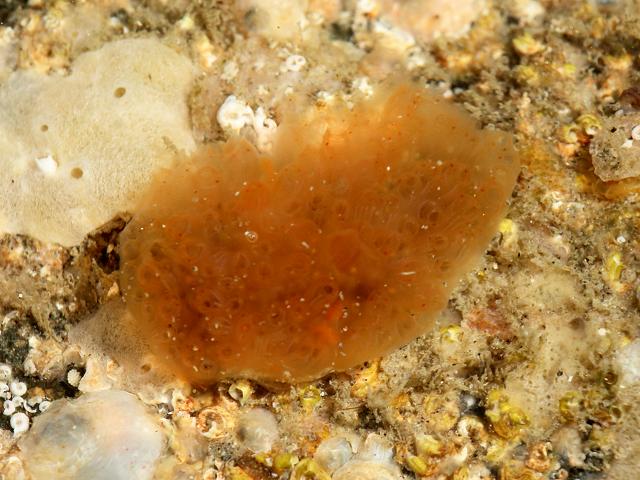
APHOTOMARINE
An educational resource dedicated mainly to the photography
and diversity of marine life that can be found in coastal waters
and intertidal areas of Great Britain and Ireland by David Fenwick.

Aplidium sp. (Wherry Rocks, Penzance, 06.04.12, and other locations) - A sea squirt (Tunicate images)
Scroll down and rollover titles to change screen image or click on title to view image.
Sea squirt
Aplidium sp.
- under rock on an ELWS 1
Aplidium sp.
- under rock on an ELWS 1
Sea squirt
Aplidium sp.
- under rock on an ELWS 2
Sea squirt
Aplidium sp.
- under rock on an ELWS 3
Sea squirt
Aplidium sp.
- under rock / out of water 1
The specimen above, which is marked with two red spots on the zooids, was found under a rock on the extreme lowershore on an extra low water spring tide (ELWS) at Wherry Rocks, Wherrytown, Penzance, Cornwall, 06.04.12.
Sea squirt
Aplidium sp.
- under rock on lowershore 1
Sea squirt
Aplidium sp.
- under rock on lowershore 2
Sea squirt
Aplidium sp.
- under rock on lowershore 3
Sea squirt
Aplidium sp.
- under rock on lowershore 4
Sea squirt
Aplidium sp.
- zooid 1
Sea squirt
Aplidium sp.
- zooid 2
Sea squirt
Aplidium sp.
- larva within zooid 1
Sea squirt
Aplidium sp.
- larva within zooid 2
Sea squirt
Aplidium sp.
- zooid with 8 lobed crown 1
The specimen above was found under a rock on the extreme lowershore on an extra low water spring tide (ELWS) at Wherry Rocks, Wherrytown, Penzance, Cornwall, 22.06.20.
The species here is undescribed despite being frequent at some intertidal sites in the west of Cornwall, It is familiar to Prof. David Kipling who calls it 'Caramel Two Spot'.
Aplidium punctatum has one red spot at the head of each zooid, Morchellium argus has four red spots at the head of the zooid. This species only has two spots.
I am grateful for the advice from Professor David Kipling for the advice he has given regarding this species.

The main objective of this website is in furthering environmental awareness and education through the medium of photography. To increase awareness and access to the wildlife of the region and help
people find and identify it. Sometimes the difference between species is obvious but many species can only be determined by observing microscopic characteristics that are specific to any one species.